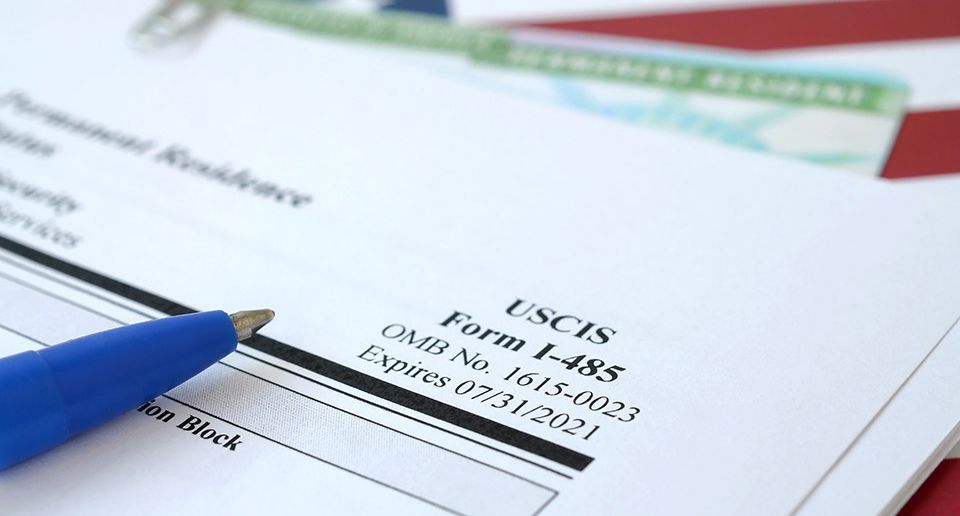Soy indocumentado, ¿califico para beneficios públicos?
Santos Lloyd Law Team • June 15, 2023
Click here to read this article in English and Portuguese
La respuesta a esto es: ¡depende! Los criterios de elegibilidad para los beneficios públicos varían entre estados. Siempre es importante verificar cuales son los requisitos del estado en el que vive para acceder a los beneficios públicos.
En el estado de California, puede acceder a beneficios públicos según su estado migratorio. Los beneficios públicos pueden ayudar a cubrir gastos básicos como alimentación, vivienda y atención médica.
- ¿Para qué beneficios públicos soy elegible en California?
Los inmigrantes que son residentes de California pueden calificar para la matrícula estatal en la Universidad de California, las Universidades Estatales de California y los Colegios Comunitarios de California si tienen ciertos tipos de estatus migratorio. Los estudiantes indocumentados aún pueden calificar para la matrícula estatal de acuerdo con el Proyecto de Ley 540 de la Asamblea de California. Los sitios web de universidades y colegios suelen tener información y recursos específicamente para estudiantes indocumentados. La oficina de admisiones del campus también puede responder cualquier pregunta adicional que pueda tener al respecto.
En California, MediCal de emergencia (California’s Medicaid program) está disponible para todas las personas, independientemente de su estado migratorio. Si es indocumentada y está embarazada o acaba de tener un bebé, puede ser elegible para la cobertura prenatal de MediCal y la cobertura relacionada con el embarazo hasta por un año.
Los niños indocumentados y las personas mayores de 50 años pueden calificar para MediCal completo.
Si ha solicitado una visa U, puede ser elegible para MediCal completo, asistencia en efectivo (CalWORKs, GR, CAPI) y el programa estatal de asistencia alimentaria (CalFresh).
Si ha solicitado una Visa T, puede ser elegible para MediCal completo, Asistencia en efectivo (CalWORKs, GR, CAPI), Programa estatal de asistencia alimentaria (CalFresh), Beneficios federales para refugiados y Ayuda financiera federal.
Si ha solicitado VAWA, puede ser elegible para MediCal completo, Asistencia en efectivo (CalWORKs, GR, CAPI), Programa estatal de asistencia alimentaria (CalFresh) y Ayuda financiera federal.
- ¿Recibir beneficios públicos me impedirá obtener una Green Card en el futuro?
Muchas personas temen solicitar beneficios públicos porque no quieren ser considerados una carga pública. La “carga pública” es una prueba para determinar si es probable que alguien que solicita una tarjeta verde o una visa para ingresar a los Estados Unidos dependa de ciertos beneficios públicos en el futuro. Si es probable que alguien sea una carga pública, se negará su tarjeta de residencia o solicitud de visa.
La carga pública afecta a las personas que solicitan la residencia permanente a través de una petición de familiar de ciudadano estadounidense o residente permanente, o que solicitan una visa para ingresar a los Estados Unidos. Otros casos de inmigración, como el asilo, la naturalización o la cancelación de deportación en la corte no se ven afectados por la regla de carga pública. Además, los sobrevivientes de violencia doméstica, tráfico y otros delitos graves pueden recibir beneficios públicos sin que ello perjudique su estatus migratorio. Sin embargo, es extremadamente importante decir siempre la verdad al solicitar beneficios públicos para evitar la inmigración u otros problemas relacionados.
- ¿Recibir MediCal me causará problemas para obtener una Green Card en el futuro?
No - MediCal, CalFresh, los programas de vivienda, WIC, ayuda en caso de emergencia y desastre, Head Start y las comidas escolares gratuitas o de costo reducido NO son parte de la prueba de carga pública. Esto significa que recibir cualquiera de estos beneficios no causará problemas para obtener la Residencia Permanente en el futuro. Recuerde siempre decir la verdad cuando solicite beneficios públicos para evitar la inmigración u otros problemas relacionados.
- ¿Qué pasa con recibir beneficios relacionados con COVID-19? ¿Causarán problemas con mi solicitud de tarjeta verde?
¡De ninguna manera!, los cheques de estímulo y los créditos fiscales tampoco forman parte de la prueba de carga pública. Los beneficios públicos de COVID-19 relacionados con alimentos, vivienda, asistencia en efectivo, asistencia de alquiler, créditos fiscales, pagos de estímulo, desempleo, subvenciones de ayuda financiera para estudiantes, Programa de protección de cheques de pago y indulgencia de préstamos estudiantiles NO se considerarán para la prueba de carga pública. El gobierno ha declarado que no considerará las pruebas, el tratamiento o la atención preventiva de COVID-19, incluidas las vacunas, como parte de la prueba de carga pública. De hecho, el gobierno alienta a todos, independientemente de su estatus migratorio, a recibir la vacuna contra el COVID-19.
Recuerde que las leyes y políticas de inmigración cambian constantemente, por lo que es mejor comunicarse con un abogado si tiene alguna pregunta antes de solicitar beneficios públicos.
Este blog no pretende ser una asesoría legal y nada aquí debe interpretarse como el establecimiento de una relación abogado-cliente. Programe una consulta con un abogado de inmigración antes de actuar sobre cualquier información que aquí lea.
Similar Posts

The answer to this is: it depends! Eligibility criteria for public benefits varies among states. It is always important to check what the state you live in requires for someone to receive public benefits. In the state of California, you might be eligible for public benefits depending on your immigration status. Public benefits may help you cover basic expenses like food, housing, and healthcare.

Once you have connected with a college program, have been admitted to the school, and deemed eligible to compete athletically, you will need to secure an F-1 student visa in order to actually attend your new college and begin your time as a student athlete. The first step in the visa process is to receive your Form I-2

For many talented athletes around the world, U.S. college athletics represent a remarkable opportunity to combine elite athletic competition with higher education. In sports such as basketball, soccer, track and field, and tennis, among others, hundreds of colleges and universities across the United States offer struct

Under the new regulation, if a person filed or files Form I-589, Application for Asylum and for Withholding of Removal after October 1, 2024, and the application remains pending with USCIS for 365 days, the applicant must pay an Annual Asylum Fee (AAF) on the one-year anniversary of his or her filing date.




